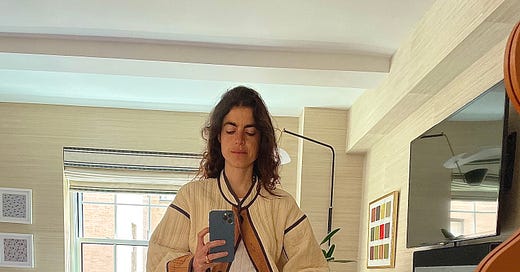I’ve been doing this thing for the past few months where I put an outfit together and if I like it, I wear it until one of its components gets dirty or starts to smell. Before I came to Europe (I’m in Hamburg right now and spent the end of last week in Rome), the most recent perpetrator of this new habit was:
Originally, I thought this behavior represent…
Keep reading with a 7-day free trial
Subscribe to The Cereal Aisle by Leandra Medine Cohen to keep reading this post and get 7 days of free access to the full post archives.




